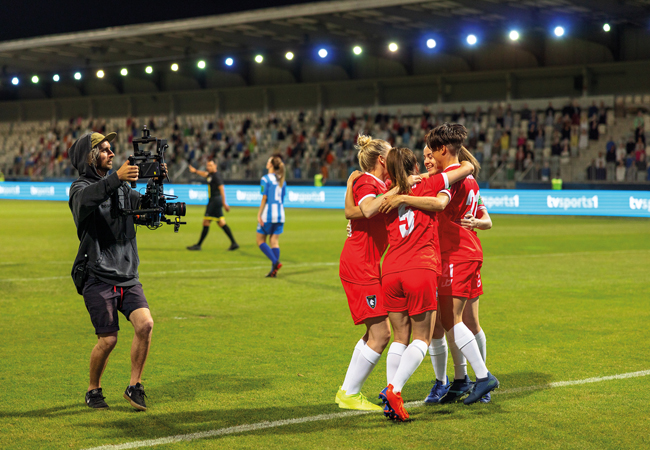
LG4 is the long-standing Society of Light and Lighting (SLL) guide to sports lighting, and reflects the current trends in terms of the sports themselves and lighting techniques. Since the last guide was published in 2006, we have seen growth in participation at an amateur level, new sports becoming popular, and greater coverage from broadcasters.
We have also seen a technological revolution in lighting – with the switch to LEDs – and in broadcasting in terms of what is delivered to our screen. In 2018, EN 12193, the European standard for sports lighting, was published, and our task group included authors from that working group. All of these have driven the updates to the latest edition of LG4.
- The guide is concerned with the lighting of sports arenas and other playing and recreational spaces. It takes into account a number of factors, including the level of play, which will influence the speed of the action and, therefore, the visual task. Usually, the higher the level of play, the more stringent the lighting requirements. We also have to take into account the different users:
- Players have to be able to see clearly to perform to their optimum level. Small balls moving fast require more light than large balls moving slowly.
- Lighting must enable spectators to see the action, whether up close or far away.
Television plays an important part in making sport available to the widest possible audience. That audience now demands close-ups showing the strain on the competitors’ faces, multiple camera angles, and instant slow-motion replays. Picture quality has gone from HD to 4K and 8K. The lighting must ensure that the highest-quality pictures can be obtained.
The guide covers all aspects of an installation, and there is advice on 51 sports, from archery to wrestling. Greyhound racing has been taken out, although the old guide can always be referred to if necessary, but there are some new sports. In some cases, the governing body may have established the lighting requirements – which should also be considered – but, for many, LG4 will be the primary reference source. In all cases, we have been careful to align with other standards.
Larger indoor and outdoor venues, whether single-use or multi-use, have their own section. For these, the siting of the lighting is critical to achieving the correct performance and minimising glare. This is something that needs to be considered at the earliest possible stage of the design, as lighting positions rely on the physical structure of the venue. If this is overlooked, it can be impossible to achieve the right lighting result if the mounting positions do not exist.
In particular, broadcasters need to ensure the lighting will deliver good-quality pictures from all camera angles and that the lighting doesn’t cause flare in the camera lens. An addendum to the previous edition was issued to take account of updated requirements from broadcasters, in particular the flicker caused by discharge lamps. With the introduction of LED sources, cameras can operate at high shutter speeds for slow motion without any specific measures being taken. Similarly, it has not been necessary to increase levels for 4k and 8K broadcasting. However, uniformity and colour consistency have become more critical.
The new LG4 has been written for the future and the assumption that all new or refurbished projects will be using LEDs. Dimming is possible and there is no longer a time to wait for the lights to come on after a power failure. Practically, the poorest colour rendering is above Ra70, so the minimum recommended colour rendering in the guide has been uplifted to Ra>70 for outdoor applications and >Ra80 for indoor. Players, in particular, will appreciate the better quality of light in future.
One big plus for the LED is that it now outstrips all previous light sources in terms of efficacy, which means less energy use than before. This is just one of the environmental considerations addressed in the guide. The other is the growing demand for the control of stray light from sports installations.
For larger stadiums, THE light tends to be contained within stands, but for community and recreational activities there is little to stop it shining onto adjacent buildings or into the sky – and it is in these situations that lighting is likely to be used daily, into the evening.
Specific criteria to manage this are included and refer to well-established guidelines. Also, light control can be better with LED sources, so we can satisfy environmental concerns at the design stage.
The new LG4 is essential reading for anyone involved in lighting for sport and leisure facilities, and will ensure that lighting is designed to the highest standards.
Mike Simpson, FSLL, is global applications lead at Signify and a former president of the SLL and CIBSE
SLL Lighting Guide 4 (LG4): Sports lighting is available at www.cibse.org/knowledge
Members of the LG4 task group are: Mike Simpson (chair); Giulio Antonutto; Russell Evans; Griffiths Evans; Richard Morris; Dr Alan Smith;and Kevin Theobald
This article first appeared in SLL’s Light Lines
